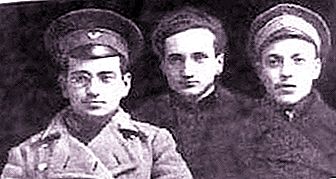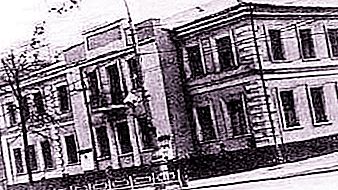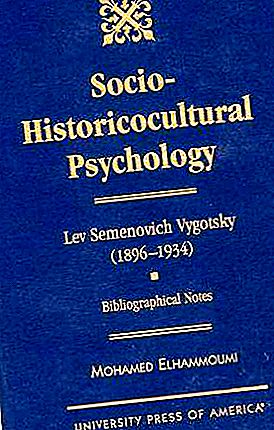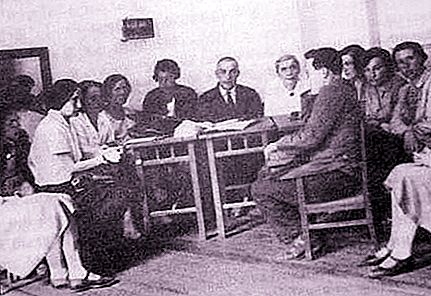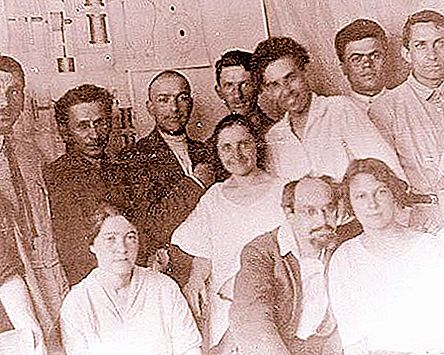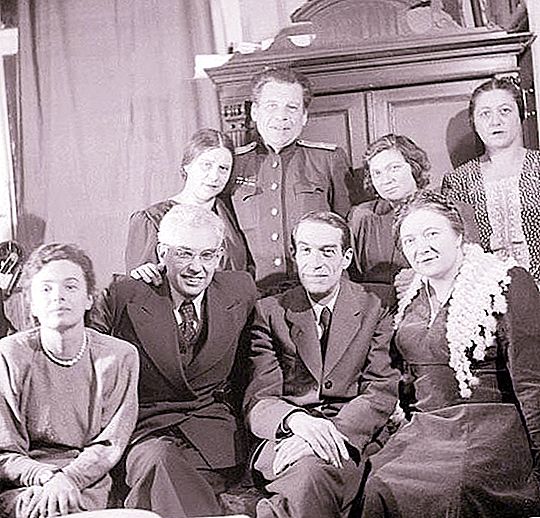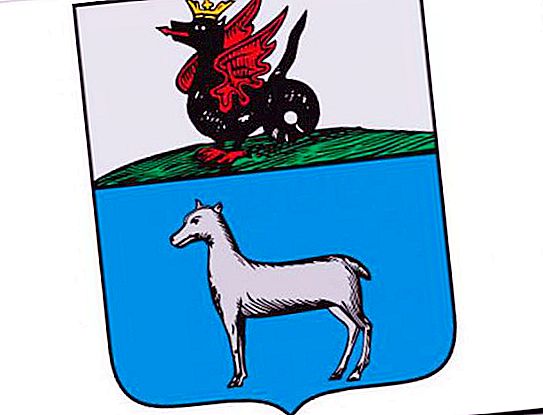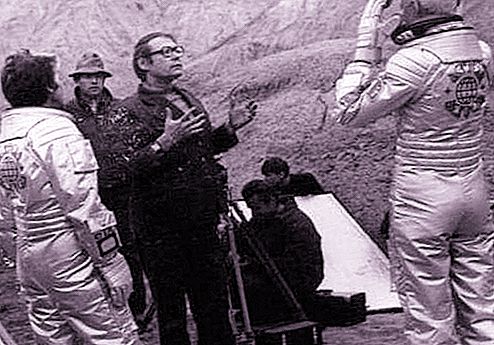The outstanding scientist Vygotsky Lev Semenovich, whose main works are included in the golden fund of world psychology, managed a lot in his short life. He laid the foundation for many subsequent areas in pedagogy and psychology, some of his ideas are still waiting for their development. The psychologist Lev Vygotsky belonged to a galaxy of prominent Russian scientists who combined erudition, brilliant rhetorical abilities and deep scientific knowledge.
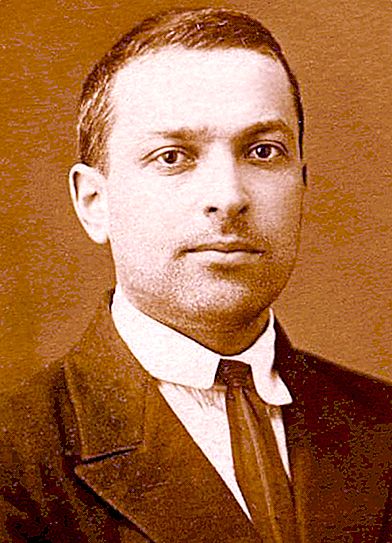
Family and childhood
Leo Vygotsky, whose biography began in a prosperous Jewish family in the city of Orsha, was born on November 17, 1896. His surname at birth was Vygodsky, he changed the letter in 1923. The father's name was Simkh, but in the Russian manner they called Semyon. Leo's parents were educated and wealthy people. Mom worked as a teacher, father was a merchant. In the family, Leo was the second of eight children.
In 1897, the Vygodskys moved to Gomel, where his father became the deputy bank manager. Leo’s childhood was quite prosperous, mother devoted all her time to children. The children of the brother Vygodsky Sr. also grew up in the house, in particular brother David, who had a strong influence on Leo. The Vygodskikh House was a kind of cultural center, where the local intelligentsia gathered, discussed cultural news and events in the world. My father was the founder of the first public library in the city, since childhood, children have become accustomed to reading good books. Subsequently, several prominent philologists left the family, and in order to differ from his cousin, the representative of Russian formalism, Leo will change the letter in the surname.
Study
For children, a private teacher, Solomon Markovich Ashpiz, was known for his unusual pedagogical method based on Socrates' Dialogues. In addition, he adhered to progressive political views and was a member of the Social Democratic Party.
Leo was formed under the influence of a teacher, as well as brother David. From childhood, he was fond of literature and philosophy. His favorite philosopher was Benedict Spinoza, and the scientist carried this passion through his whole life. Lev Vygotsky studied at home, but later successfully passed the external exam for the fifth grade of the gymnasium and went to the 6th grade of the Jewish men's gymnasium, where he received his secondary education. Leo studied well, but continued to receive private lessons in Latin, Greek, Hebrew, and English at home.
In 1913, he successfully passed the entrance examinations at Moscow University to the medical faculty. But pretty soon it translates into legal. In 1916 he wrote many reviews of books by contemporary writers, articles on culture and history, and reflections on the "Jewish" question. In 1917, he decided to leave jurisprudence and transferred to the historical and philological faculty of the University. Shaniavsky, who ends in a year.
Pedagogy
After graduating from university, Lev Vygotsky was faced with the problem of employment. He, with his mother and younger brother, first goes to Samara in search of a place, then goes to Kiev, but in 1918 he returns to Gomel. Here he joins the construction of a new school, in which he begins to teach with his older brother David. From 1919 to 1923 he worked in several educational institutions of Gomel, and also headed the department of public education. This pedagogical experience became the basis for his first scientific research in the field of methods for influencing the younger generation.
He organically enters into a pedological direction progressive for that time, which combined psychology and pedagogy. Vygotsky creates an experimental laboratory at the Gomel College, in which his pedagogical psychology is formed. Vygotsky Lev Semenovich actively speaks at conferences and becomes a prominent scientist in the new field. Already after the death of the scientist, works devoted to the problems of the formation of skills and children's education will be combined in a book called “Educational Psychology”. It will contain articles about attention, aesthetic education, forms of studying the personality of the child and the psychology of the teacher.
First steps in science
While still at university, Lev Vygotsky is fond of literary criticism, publishes several works on poetics. His work on the analysis of "Hamlet" by W. Shakespeare was a new word in literary analysis. However, Vygotsky began to engage in systematic scientific activity in a different field - at the intersection of pedagogy and psychology. His experimental laboratory conducted works that became a new word in pedology. Even then, Leo Semenovich was occupied with mental processes and questions of the influence of psychology on the activities of teachers. His works, presented at several scientific conferences, were vivid and peculiar, which allowed Vygotsky to become a psychologist.
Path in psychology
Vygotsky’s first works were related to the problems of teaching abnormal children; these studies not only laid the foundation for the development of defectology, but also made a serious contribution to the study of higher mental functions and mental patterns. In 1923, at the congress on psychoneurology, a fateful meeting with the outstanding psychologist A. R. Luria takes place. He was literally captivated by Vygotsky's report and initiated the move of Lev Semenovich to Moscow. In 1924, Vygotsky received an invitation to work at the Moscow Institute of Psychology. Thus began the brightest, but shortest period of his life.
The interests of the scientist were very diverse. He dealt with the problems of current reflexology at that time, made a significant contribution to the study of higher mental functions, and also did not forget about his first attachment - about pedagogy. After the scientist’s death, a book will appear combining his many years of research, “Psychology of Human Development”. Vygotsky Leo Semenovich was a methodologist of psychology, and in this book his fundamental reflections on the methods of psychology and diagnosis are collected. Particularly important is the part devoted to the psychological crisis; of extreme interest are 6 lectures by the scientist, in which he dwells on the main issues of general psychology. Vygotsky did not have time to deeply reveal his ideas, but became the founder of a number of areas in science.
Cultural History Theory
A special place in the psychological concept of Vygotsky is occupied by the cultural-historical theory of the development of the psyche. In 1928 he made a bold statement for those times that the social environment is the main source of personality development. Vygotsky Lev Semenovich, whose pedagogical works were distinguished by a special approach, rightly believed that the child goes through the stages of the formation of the psyche not only as a result of the implementation of biological programs, but also in the process of mastering “psychological tools”: culture, language, and accounting system. Consciousness develops in cooperation and communication, so the role of culture in the formation of personality cannot be overestimated. According to the psychologist, a person is an absolutely social being, and outside of society many mental functions cannot be formed.
"Psychology of art"
Another important, landmark book, which became famous for Vygotsky Leo, is “Psychology of Art”. It was published many years after the death of the author, but even then made a huge impression on the scientific world. Researchers from different fields experienced its influence: psychology, linguistics, ethnology, art history, sociology. The main idea of Vygotsky was that art is an important area of development of many mental functions, and its emergence is due to the natural course of human evolution. Art is the most important factor in the survival of the human population; it performs many important functions in society and in the life of individual individuals.
"Thinking and Speech"
Vygotsky Lev Semenovich, whose books are still extremely popular all over the world, did not manage to publish his main work. The book “Thinking and Speech” was a real revolution in the psychology of its time. In it, the scientist was able to express many ideas that were later formulated and developed in cognitive science, psycholinguistics, social psychology. Vygotsky experimentally proved that human thinking is formed and develops exclusively in speech activity. Moreover, language and speech are also means of stimulating mental activity. He discovered the stadial nature of the formation of thinking and introduced the concept of "crisis", which is used everywhere today.
Scientist's contribution to science
Vygotsky Lev Semenovich, whose books are now obligatory for every psychologist to read, for his very short scientific life was able to make a considerable contribution to the development of several sciences. His work became, among other studies, the impetus for the formation of psychoneurology, psycholinguistics, cognitive psychology. His cultural-historical concept of the development of the psyche lies at the basis of an entire scientific school in psychology, which most actively begins to develop in the 21st century.
It is impossible to underestimate Vygotsky’s contribution to the development of Russian defectology, developmental and educational psychology. Many of his works only today receive their true appreciation and development; in the history of Russian psychology, such a name as Lev Vygotsky now occupies an honorable place. The scientist’s books are constantly being reprinted today, his drafts and drafts are published, the analysis of which shows how powerful and original his ideas and designs were.
Vygotsky’s students are the pride of Russian psychology, fruitfully developing his own ideas. In 2002, the book of the scientist "Psychology" was published, in which his fundamental research was combined in the basic sections of science, such as general, social, clinical, age-related psychology, as well as developmental psychology. Today, this textbook is basic for all universities in the country.
Personal life
Like any scientist, Lev Semenovich Vygotsky, for whom psychology became the work of life, devoted most of his time to work. But in Gomel, he had a like-minded bride, and later his wife, Roza Noevna Smekhova. The couple lived a short life together - only 10 years, but it was a happy marriage. The couple had two daughters: Gita and Asya. Both became scientists, Gita Lvovna - psychologist and defectologist, Asya Lvovna - biologist. The psychological dynasty was continued by the granddaughter of the scientist - Elena Evgenievna Kravtsova, who now heads the Institute of Psychology named after her grandfather.

